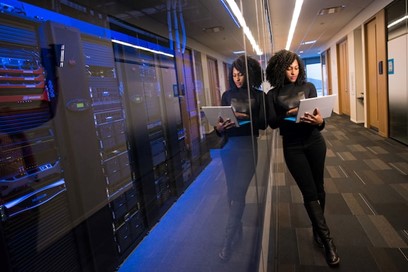Isaac Junior Salvant of Haiti has over 12 years of experience in IT, Managed Services, Sales, and Business Development. In the following article, Isaac Junior Salvant explains that with the future of IT – from AI to IoT, the tech sector has an exciting few years ahead.
As of late, all industries are changing rapidly, but one of the fastest-moving sectors is IT. Businesses must search for and tap into emerging technologies to stay ahead of the curve and remain relevant to increasingly forward-thinking consumers.
Isaac Junior Salvant on AI and Automation
To some, Isaac Junior Salvant of Haiti says that it may now feel as though AI has now reached its full potential. In truth, though, it’s just getting started, and the coming decade will prove to be fantastic for companies aiming to streamline product development processes and operations.
Isaac Junior Salvant of Haiti explains that artificial intelligence can aid business predictions and improve outcomes by discovering patterns in large amounts of otherwise untapped data. Such insights will give decision-makers limitless access to valuable information, allowing them to identify new potential markets, develop products, optimize pricing, enhance forecasting accuracy, and more.
Currently, companies are thinking about data center AI. After all, analysis of long-term trends and information is its traditional application.
However, as time goes on, Isaac Junior Salvant of Haiti explains that the technology will increasingly be used at the edge — in field equipment, infrastructure, and manufacturing lines — for automation capabilities and other real-time activities.
The experts at Intel note machine vision as an exciting future development. It would allow manufacturers to detect defects in production lines, making quality assurance more efficient.
While implementing artificial intelligence can be initially complex, the end results and benefits greatly outweigh the cons, especially as the world transitions into an ever-automated environment.
Cloud Infrastructure
Originally, cloud deployments were split into private or public categories. However, hybrid models, dubbed multi-cloud environments, are making a splash in various industries.
Isaac Junior Salvant of Haiti says that this new approach helps IT teams seamlessly move data and apps between several public and private cloud providers. Thus, they can quickly choose the best resource based on workload requirements like location, service-level agreement, and cost.
Naturally, the digital future is subject to change, but multi-cloud environments let companies handle unpredictability with straightforward migrations and process efficiency.
The Internet of Things and Edge Computing
Already, the IoT has linked millions of devices to the cloud and each other.
Users are now seeing the future of this technology unfold before their eyes — low-power, high-performing processors and AI are moving from the cloud, heading straight toward endpoints. Isaac Junior Salvant of Haiti says that with edge computing, the Internet of Things is genuinely intelligent.
For instance, smart cameras with VPUs (vision processing units) analyze video feeds in real-time to oversee and interpret the happenings on factory floors, at traffic junctions, or even at event venues.
Moreover, experts are toying with the idea that edge servers can perform highly advanced analytics on consumers at a retail store while complying with locality requirements. As a result, edge computing is deemed a perfect complement to cloud computing data stored locally, analyzed with reduced latency, that is quickly accessible.

 Data Security
Data Security Cybersecurity has always been a hot topic in the IT world, and as the globe shifts toward an increasingly digital atmosphere, cybercriminals are more sophisticated, boosting its importance. Hackers are already attacking multiple layers of hardware-software stacks and exploiting hiked entry points provided by newly connected devices.
Industry analysts see the future of this IT sector as one of the most important, noting that businesses should employ the latest software- and hardware-based security protocols to remain protected.
Intel has already put the cat amongst the pigeons in this regard, offering an all-new level of InfoSec practices with its Cyber Intelligence Platform (CIP). It compiles data from countless sources in order to detect and respond to disturbances within hours or even minutes, depending on their complexities.
Advanced Analytics
Advanced analytics are already seeing a major transition according to Isaac Junior Salvant of Haiti. It’s no longer about looking at historical data. Instead, it’s shifting toward predictive analytics — identifying and solving potential issues before they occur.
The technology will help businesses use previously unknown data sources like audio, video, images, and IoT sensor information to realize likely outcomes and adjust accordingly.
For example, Telematics data sent to predictive analytics software can tell fleet managers when preventive vehicular maintenance is needed.
Augmenting these analytics with AI provides even more benefits that will become apparent throughout the coming years.
The future of IT is upon the world, and it’s got plenty more to give.


